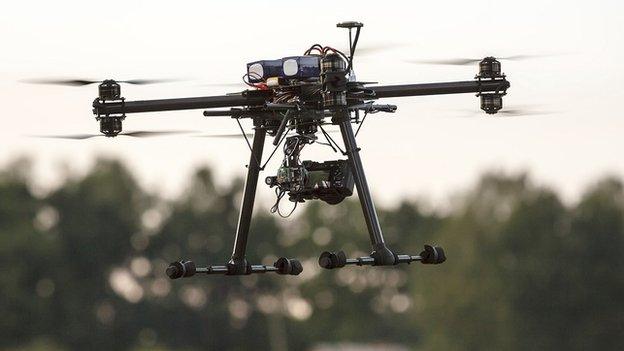DJI drones gain geo-fencing safety feature opt-out
- Published
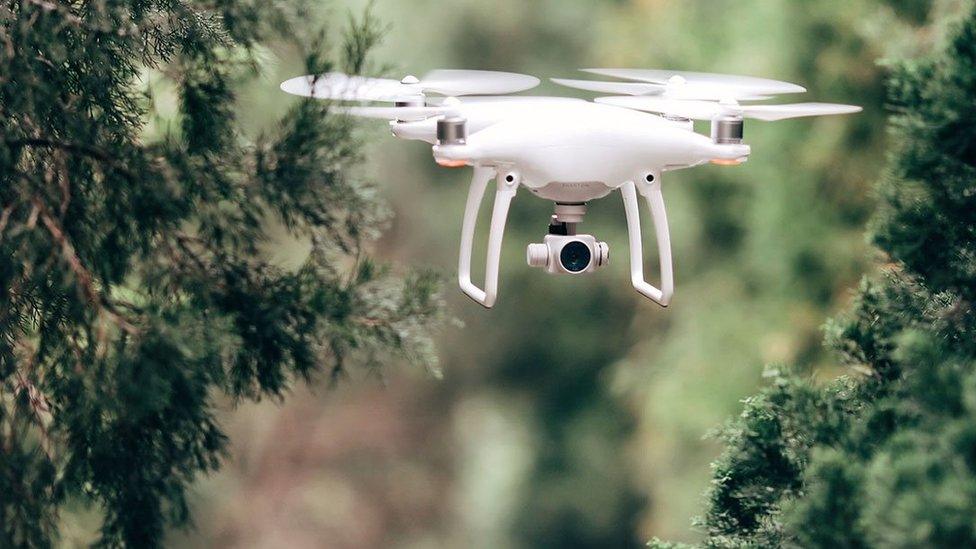
The app update allows users to override some of its drones' no-fly zone restrictions
The bestselling drone-maker has updated its app to let owners bypass a feature that stops its aircraft flying into or taking off in sensitive locations.
DJI introduced geo-fencing in 2013 - a technology that uses GPS location signals to stop its machines flying close to airports, professional sports events and other restricted zones.
The opt-out allows operators, external to disable the ban in many, but not all, cases.
The Chinese firm says it will keep a record of those who use the feature.
It suggests the move will make it easier for authorised personnel to carry out inspections and other sanctioned activities in controlled areas.
But one expert questioned the wisdom of the move.
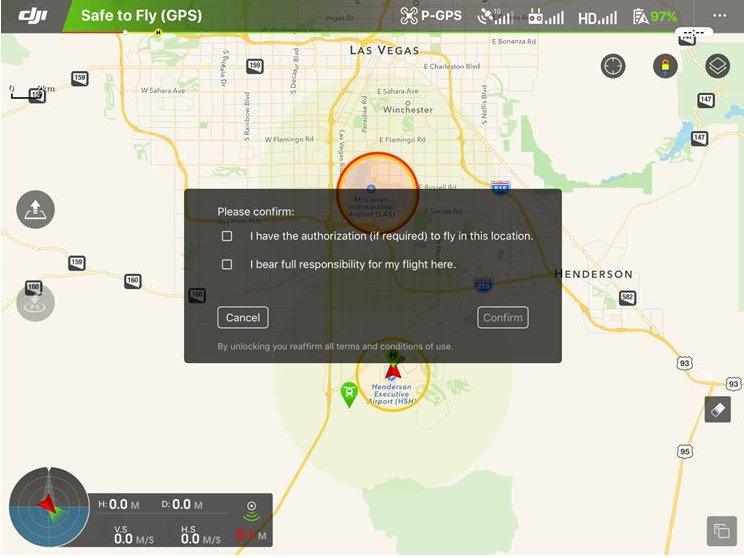
DJI's app asks the drone pilot to take responsibility for flying into a restricted area
Accountable owners
DJI's Geo app is used to control its Phantom and Inspire drones.
If the pilot sends one of the aircraft into a flagged zone, a prompt appears asking them to verify their account and acknowledge what they are doing.
In the past, the only way to achieve this was to request an override from the company or hack the drones' firmware.
"We don't have the ability to verify if someone has authorisation," Brendan Schulman, DJI's legal affairs chief told the BBC.
"Essentially, the principle here is operator responsibility and accountability.
"Just like driving a car, it is up to the operator to be licensed, to have the car registered and insured - the manufacturer of an automobile doesn't decide who gets to drive or not.
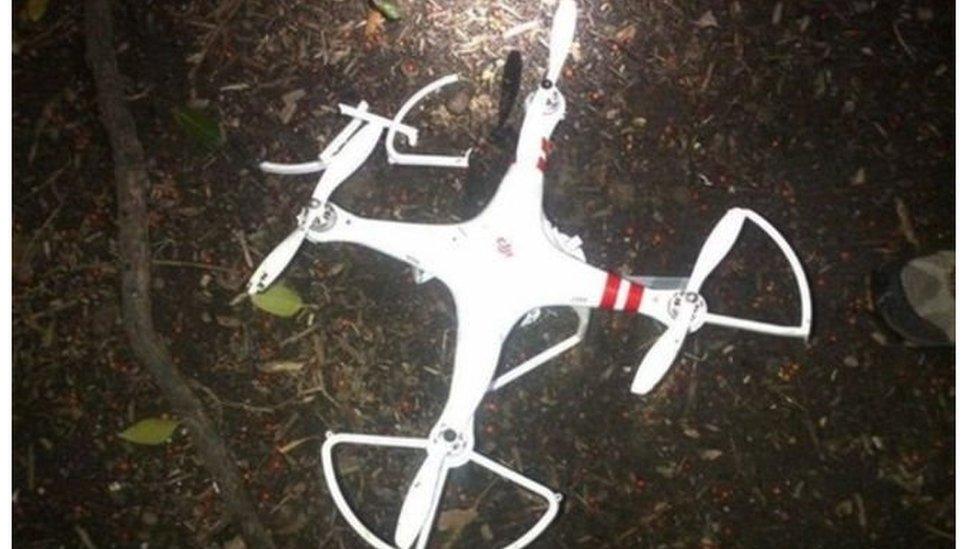
DJI banned its drones from flying over Washington DC after one crashed into a White House lawn in 2015
"Similarly, we have provided a mechanism for operators to take responsibility and verify their accounts and then go ahead and fly in most of these locations, which [takes into account] the balance between safety and innovation."
To make use of the override, a user must have given DJI their credit card details or a mobile number to act as an ID.
This means the firm can help the authorities track down those who misuse it.
"Our policy is to provide information about our customers only in response to a valid legal request," Mr Schulman said.
"So, in the US it would be a subpoena or a warrant or a court order."
It remains impossible to use the app to avoid geo-fencing over the US capital, Washington DC. DJI has also added new areas that cannot be unlocked including prisons, nuclear power plants and the innermost areas of busy airports.
Optional technology
One drones expert raised concerns, suggesting it should be up to regulators - rather than a manufacturer - to decide who bypasses the no-fly limitation.
"It would probably make more sense that if someone needed to violate geo-fencing rules, it should be done in a more specific controlled manner than a broad way in which pretty much anyone can do it and there's just a record of it," commented Ravi Vaidyanathan, a robotics lecturer at Imperial College London.
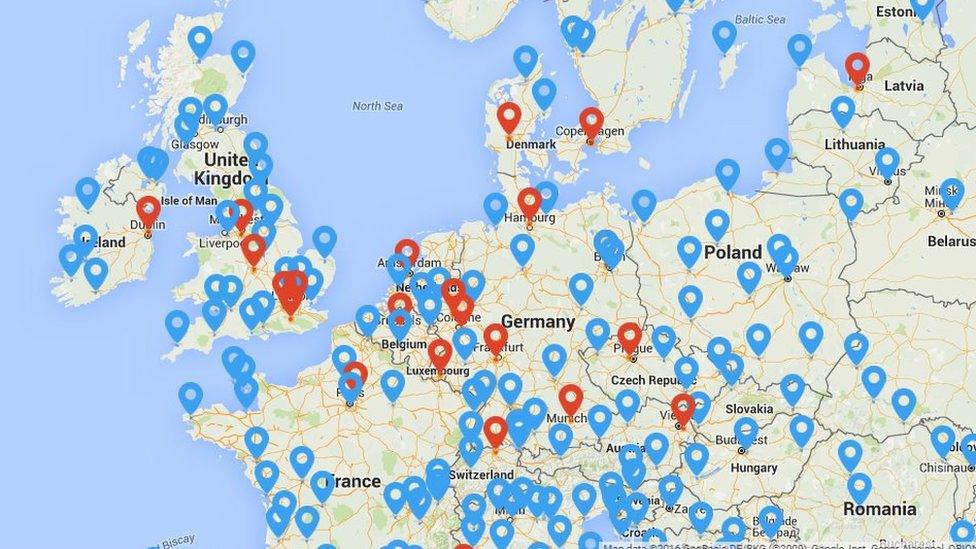
DJI operates dozens of no-fly zones over Europe and can add others at short notice for temporary events
Although the UK government has raised the prospect of making geo-fencing mandatory, external on drones, at present it is not a compulsory feature anywhere in the world.
"Tough penalties are already in place for misuse of drones, including up to five years' imprisonment for endangering an aircraft," said a spokeswoman for the UK's Department of Transport.
"We will be consulting on proposals, including registration and licensing options, before a government strategy is published later this year."
DJI noted that it had allowed some users to beta test its opt-out since December, and was not aware of it causing problems.
"Someone who is going to misuse a drone will purchase another brand or try to disable the systems [anyway]," added Mr Schulman.
"The feature presumes the good faith of responsible operators and that is what we've seen."
- Published16 May 2016

- Published18 April 2016
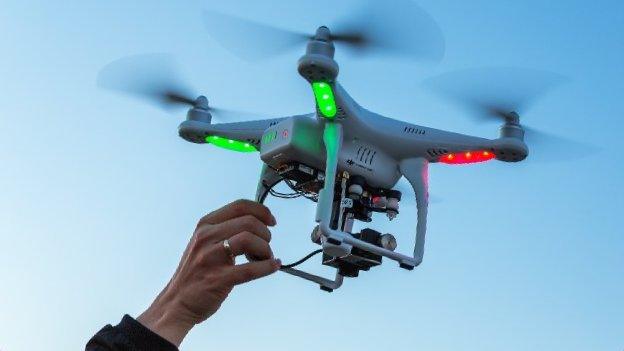
- Published5 March 2015
